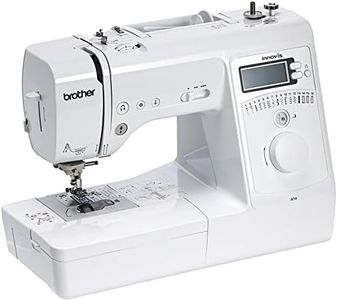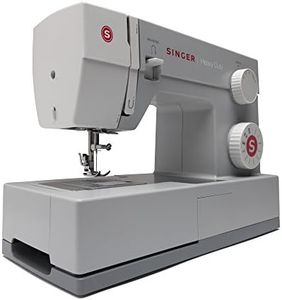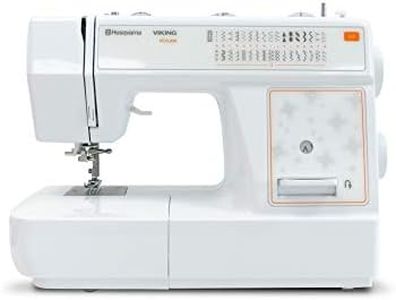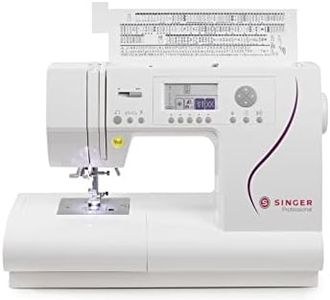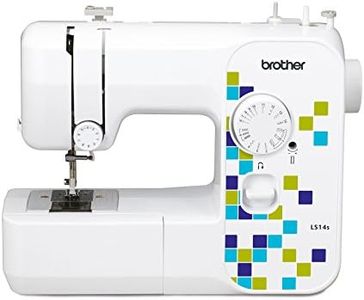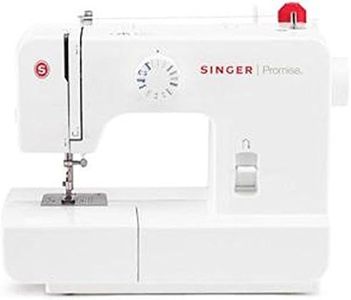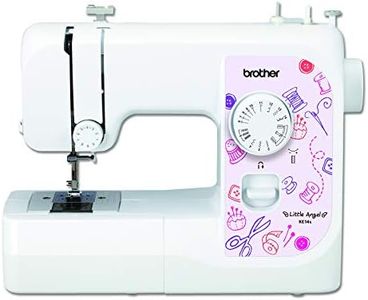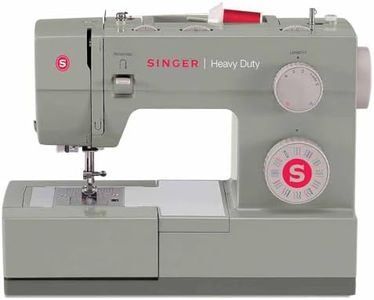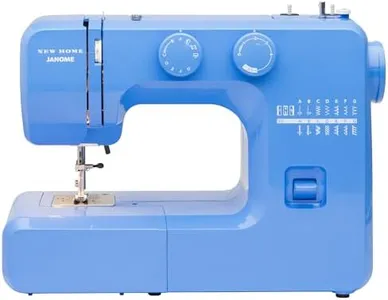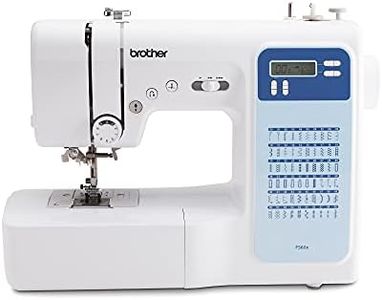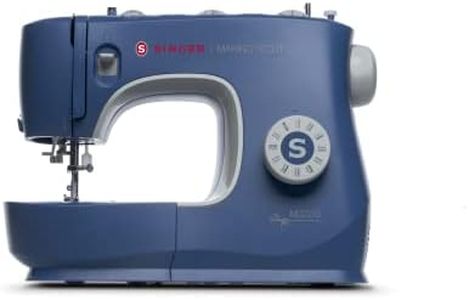We Use CookiesWe use cookies to enhance the security, performance,
functionality and for analytical and promotional activities. By continuing to browse this site you
are agreeing to our privacy policy
10 Best Basic Sewing Machine
From leading brands and best sellers available on the web.Buying Guide for the Best Basic Sewing Machine
Choosing a basic sewing machine can seem overwhelming with all the choices available, but focusing on your actual sewing needs and the key features can help you find the perfect fit. Consider what kind of projects you'll take on—whether it’s simple clothing repairs, making home décor, or crafting—and look for a machine that is easy to use, reliable, and matches your skill level. Nothing beats a machine that feels intuitive and motivates you to keep creating.Stitch TypesStitch types refer to the different patterns the machine can sew, like straight stitches, zigzag, or buttonhole stitches. This is important because the variety of stitches determines what kinds of sewing tasks you can accomplish. Machines often range from just a handful of basic stitches up to dozens of decorative options. If you’re a beginner or want to do simple tasks like hemming or seaming, a machine with straight and zigzag stitches will suffice. If you’re interested in crafts or adding decoration, look for more stitch options, but remember, too many choices can sometimes be overwhelming or go unused.
Ease of UseThis involves features like how simple it is to thread the machine, wind the bobbin, and select stitches. A more user-friendly machine will have clear instructions, easy-access dials, and perhaps automatic needle threaders. For beginners or those who value time-saving convenience, a machine that’s easy to set up and operate will make sewing less frustrating and more enjoyable. Think about your comfort with new technology and how much patience you have for learning new tools.
Mechanical vs. ElectronicBasic sewing machines are often either mechanical (run by dials and levers) or electronic (with push buttons and sometimes digital screens). Mechanical machines are typically durable and straightforward, making them ideal for simple tasks and for users who want an uncomplicated experience. Electronic machines can offer more stitch options and automatic features but can take a bit more time to learn. Choose mechanical for a no-fuss approach or electronic if you’d like a few modern conveniences.
Stitch Length and Width AdjustabilityBeing able to change the length and width of your stitches lets you customize your sewing for different fabrics and projects. Adjustable controls help you do things like reinforce seams or sew stretchy materials. If you plan to stick to basic repairs or learn gradually, simple adjustability might be enough. If you like experimenting with different fabrics or techniques, look for a machine with flexible settings.
Built-In Free ArmA free arm is a smaller, removable part of the sewing surface, which makes sewing sleeves, pant legs, and other tubes of fabric much easier. This is valuable if you foresee working on clothing or anything requiring tight circular sewing. For mainly flat projects (like pillowcases), this feature is less critical, but it’s nice to have as your skills grow.
Buttonhole FunctionMany basic machines have a special setting for sewing buttonholes. Some machines require a four-step process, while others offer a single-step automatic function. If you plan on making garments or items with buttons, a reliable buttonhole option is helpful. Four-step buttonholes work just fine for occasional use, while one-step versions are more convenient and faster if you make lots of items with buttons.
Build QualityThe overall construction of the machine affects its durability and long-term reliability. Machines with more metal parts tend to last longer, while lightweight plastic models are easier to carry but may not be as sturdy. Heavier machines are generally more stable when sewing thick materials. Consider how much you’ll move the machine around and whether you’ll sew light or heavy fabrics most often.
